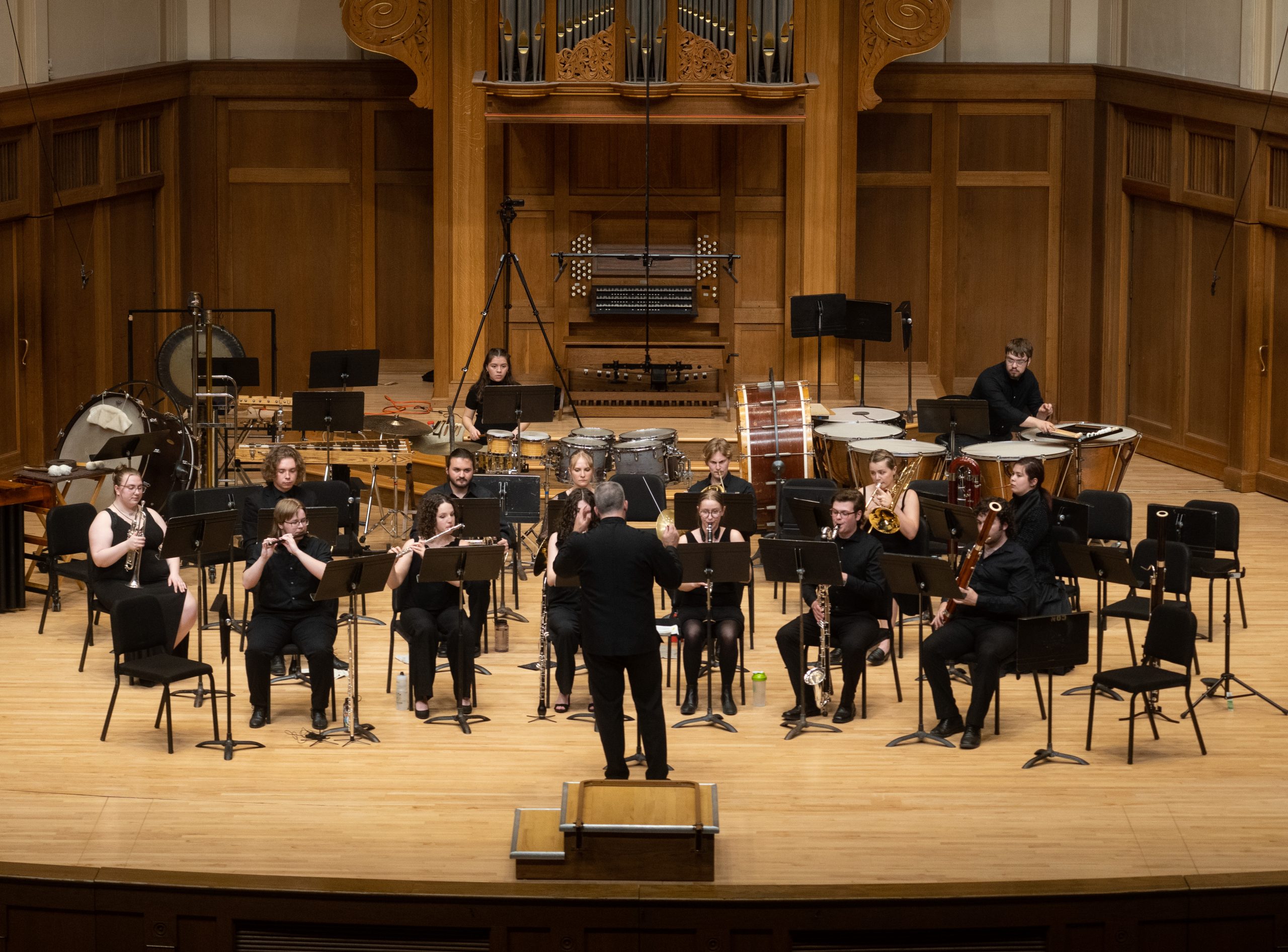If bands are known for one type of music, it’s their marches. Indeed, plenty were featured at Lawrence University’s recent Wind Ensemble and Symphonic Band concert on April 15. Hosted in the Lawrence Memorial Chapel, the program included nearly an hour and a half worth of music.
To open, Associate Dean of the Conservatory, Kimberly Clark Professor of Music and Director of Bands Andrew Mast led the Wind Ensemble in four select movements from the “Good Soldier Schweik Suite” by American composer Robert Kurka. Mast later explained that it was a set of excerpts from an opera that follows a group of “misfit soldiers” akin to those in the TV show “M*A*S*H” or novel “Catch-22.”
The suite’s first movement, “Overture,” was played at a bustling pace. A repeated rhythm punctuated by percussion, trumpets, trombone and the horn relentlessly pushed the music forward. The exactness of sophomore Seth Ploeckelman’s and first-year Brianna Castillo’s playing was particularly remarkable. For the second movement, “Lament,” sophomore Sherilyn Patterson began with a gentle oboe solo. The movement’s later music was complicated by its heavy orchestration, which made the lament-feel hard to discern.
The ensemble went straight to the work’s fourth movement, “War Dance,” where the intense playing of trombonist and junior Leah Kukman was especially effective. Mast’s approach to the rapid “Finale” was one of exciting urgency, offering a fitting ending to the suite.
A world premiere followed: “The Tartar Steppe” by John Hennecken. A commission by Mast and the Wind Ensemble, Hennecken himself entered the stage to introduce the work. He explained it as based on a 1940 book of the same name by the Italian author Dino Buzzati. The story concerns a young military officer who guards the somewhat abandoned Bastiani Fortress as he faces questions of loyalty, glory, purpose and death.
Henneckern’s colorful realization had no lack of virtuosity, which the Wind Ensemble fully met: included were blazing high trumpets and fast wind runs. Particularly notable was the flute and saxophone duet, played movingly by seniors Helen Threlkeld and Lucy Croasdale respectively.
For their final work, the Wind Ensemble took on James Reese Europe’s march “Castles in Europe.” Being a Black composer, Europe was an early ambassador for jazz, leading the first Carnegie Hall concert to feature jazz in 1912.

Chandler Wilson’s arrangement of “Castles in Europe” follows the march tradition’s tendency to retain full and lively textures throughout. The gentle and sparser trio in the middle contrasts nicely with the rest of the work, particularly from fourth-year Amber Newman’s touching piccolo solo.
After a brief intermission, the Symphonic Band took the stage, led by Associate Professor of Music Education and Associate Director of Bands Matthew Arau. They began with a march by John Philip Sousa, affectionately called the “March King.” Chosen was “The Thunderer,” a bustling work with a catchy theme made from a trill and subsequent falling staccato line.
In an intriguing programming decision, Symphonic Band’s following piece was based on the preceding Sousa march; it was movement two of Ira Hearshen’s “Symphony on Themes of John Philip Sousa.” Hearshen took Sousa’s second theme and extended it to a gradually unfolding symphonic poem.
Symphonic Band’s finale featured Jan Van der Roost’s “Dublin Dances,” a fast-paced conglomeration of three traditional Irish melodies. This was a show piece, in which the woodwinds brought enormous vitality.
In all, the concert’s central theme was crucial to its effectiveness. Too often, large ensembles present a nearly random selection of music, with no cohesivity. But here, the march-flare and general soldier theme offered a convincing narrative.

